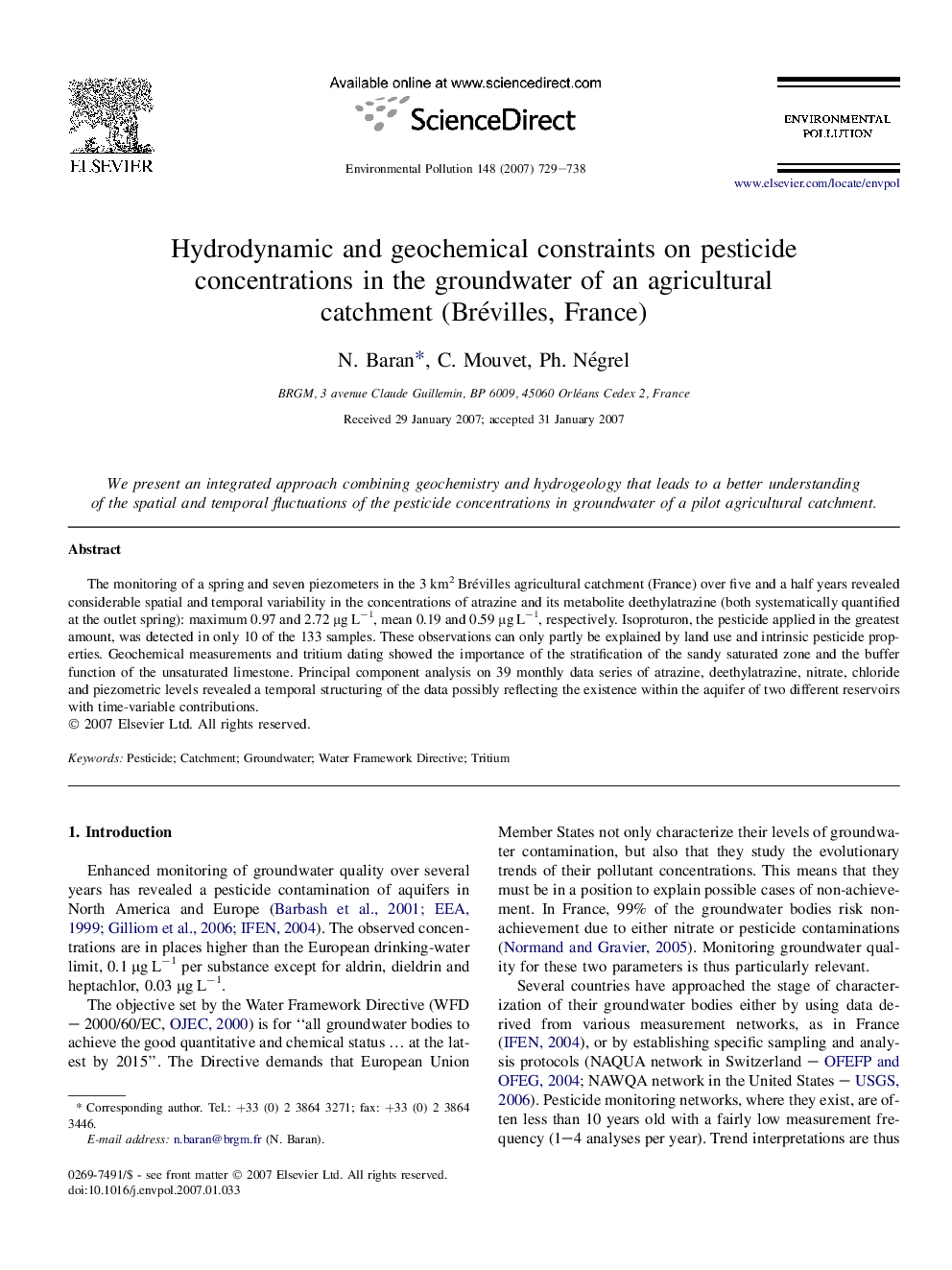| Article ID | Journal | Published Year | Pages | File Type |
|---|---|---|---|---|
| 4427171 | Environmental Pollution | 2007 | 10 Pages |
The monitoring of a spring and seven piezometers in the 3 km2 Brévilles agricultural catchment (France) over five and a half years revealed considerable spatial and temporal variability in the concentrations of atrazine and its metabolite deethylatrazine (both systematically quantified at the outlet spring): maximum 0.97 and 2.72 μg L−1, mean 0.19 and 0.59 μg L−1, respectively. Isoproturon, the pesticide applied in the greatest amount, was detected in only 10 of the 133 samples. These observations can only partly be explained by land use and intrinsic pesticide properties. Geochemical measurements and tritium dating showed the importance of the stratification of the sandy saturated zone and the buffer function of the unsaturated limestone. Principal component analysis on 39 monthly data series of atrazine, deethylatrazine, nitrate, chloride and piezometric levels revealed a temporal structuring of the data possibly reflecting the existence within the aquifer of two different reservoirs with time-variable contributions.
